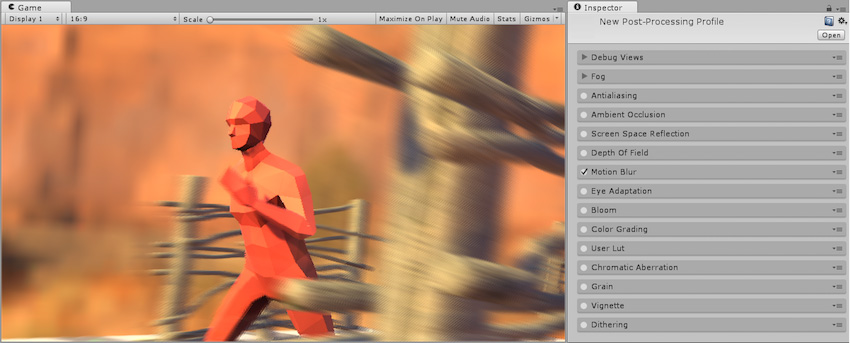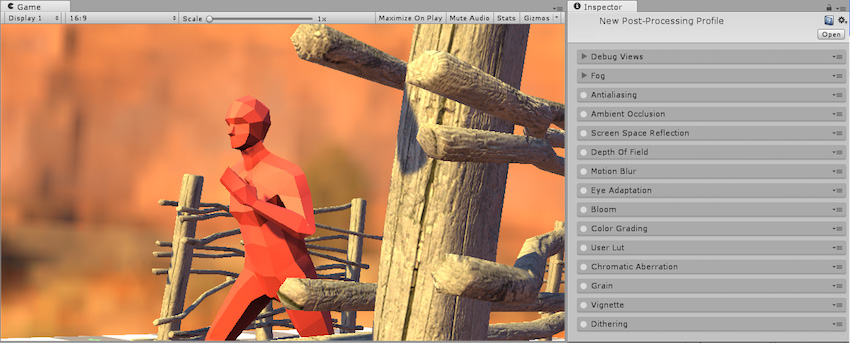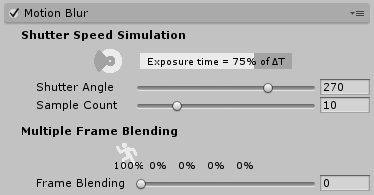Motion Blur
The effect descriptions on this page refer to the default effects found within the post-processing stack.
Motion Blur is a common post-processing effect that simulates the blurring of an image when objects filmed by a camera are moving faster than the camera’s exposure time. This can be caused by rapidly moving objects or a long exposure time. Motion Blur is used to subtle effect in most types of games but exaggerated in some genres, such as racing games.



The Motion Blur techniques supplied in the post-processing stack are:
Shutter Speed Simulation
Multiple Frame Blending
Shutter Speed Simulation
Shutter Speed Simulation provides a more accurate representation of a camera’s blur properties. However, as it requires Motion Vector support it is more expensive and not supported on some platforms. It is the recommended technique for desktop and console platforms. This effect approximates Motion Blur by storing the motion of pixels on screen in a Velocity buffer. This buffer is then used to blur pixels based on the distance they have moved since the last frame was drawn.
Properties
| Property: | Function: |
|---|---|
| Shutter Angle | The angle of the rotary shutter. Larger values give longer exposure therefore a stronger blur effect. |
| Sample Count | The amount of sample points, which affects quality and performances. |
Optimisation
- Reduce Sample Count
Restrictions
- Unsupported in VR
Requirements
Motion Vectors
Depth texture
Shader model 3
Сверьтесь со страницей аппаратные возможности графики и её эмуляция для более детального ознакомления со списком совместимого железа.
Multiple Frame Blending
The Multiple Frame Blending effect simply multiplies the previous four frames over the current frame, weighted towards the more recent frames. Whilst this effect will work on all platforms, as it does not require Motion Vector or Depth texture support, it requires storing two history buffers (luma and chroma) of the last four frames which uses memory.
Properties
| Property: | Function: |
|---|---|
| Frame Blending | The strength of multiple frame blending. The opacity of the preceding frames are determined from this coefficient and time differences. |
Optimisation
- N/A
Requirements
- Shader model 3
Сверьтесь со страницей аппаратные возможности графики и её эмуляция для более детального ознакомления со списком совместимого железа.
2017–05–24 Page published with no editorial review
New feature in 5.6